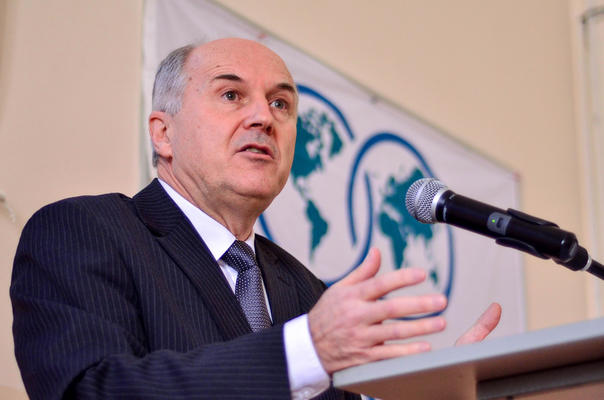

Part of the lag in output was made up in 2003-08 when GDP growth exceeded 5% per year.

With an uneasy peace in place, output recovered in 1996-99 at high percentage rates from a low base but output growth slowed in 2000-02. The interethnic warfare in Bosnia and Herzegovina caused production to plummet by 80% from 1992 to 1995 and unemployment to soar. In January 2010, Bosnia and Herzegovina assumed a nonpermanent seat on the UN Security Council for the 2010-11 term. Troop strength at the end of 2010 stood at roughly 1,500. EUFOR's mission changed from peacekeeping to civil policing in October 2007, with its presence reduced from nearly 7,000 to less than 2,500 troops. European Union peacekeeping troops (EUFOR) replaced SFOR in December 2004 their mission is to maintain peace and stability throughout the country. IFOR was succeeded by a smaller, NATO-led Stabilization Force (SFOR) whose mission was to deter renewed hostilities. The Peace Implementation Council (PIC) at its conference in Bonn in 1997 also gave the High Representative the authority to impose legislation and remove officials, the so-called "Bonn Powers." In 1995-96, a NATO-led international peacekeeping force (IFOR) of 60,000 troops served in Bosnia to implement and monitor the military aspects of the agreement. The Dayton Accords also established the Office of the High Representative (OHR) to oversee the implementation of the civilian aspects of the agreement. The Federation and RS governments were charged with overseeing most government functions. Also recognized was a second tier of government composed of two entities roughly equal in size: the Bosniak/Bosnian Croat Federation of Bosnia and Herzegovina and the Bosnian Serb-led Republika Srpska (RS). The Dayton Peace Accords retained Bosnia and Herzegovina's international boundaries and created a multi-ethnic and democratic government charged with conducting foreign, diplomatic, and fiscal policy.

On 21 November 1995, in Dayton, Ohio, the warring parties initialed a peace agreement that brought to a halt three years of interethnic civil strife (the final agreement was signed in Paris on 14 December 1995). The Bosnian Serbs - supported by neighboring Serbia and Montenegro - responded with armed resistance aimed at partitioning the republic along ethnic lines and joining Serb-held areas to form a "Greater Serbia." In March 1994, Bosniaks and Croats reduced the number of warring factions from three to two by signing an agreement creating a joint Bosniak/Croat Federation of Bosnia and Herzegovina. The Bosniak-Croat Federation, which formally is known as the Federation of Bosnia and Herzegovina, was established through the Washington Agreement in May 1994.īosnia and Herzegovina's declaration of sovereignty in October 1991 was followed by a declaration of independence from the former Yugoslavia on 3 March 1992 after a referendum boycotted by ethnic Serbs. The two political entities of Bosnia and Herzegovina are the Bosniak-Croat Federation and Republika Srpska. It was established through the Dayton Agrement in December 1995, which created a federal state consisting of two political entities. Bosnia and Herzegovina is a federal republic in the Balkans.


 0 kommentar(er)
0 kommentar(er)
